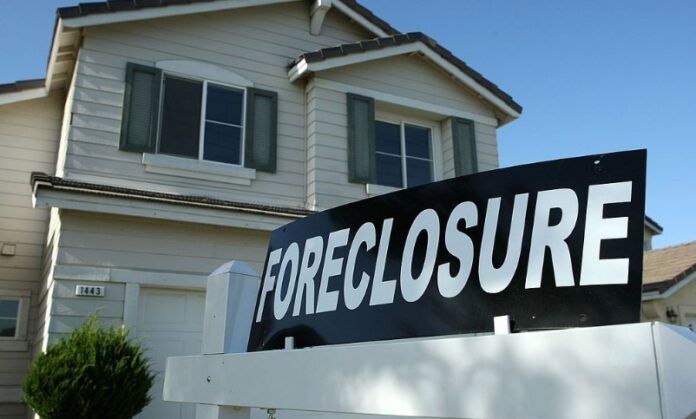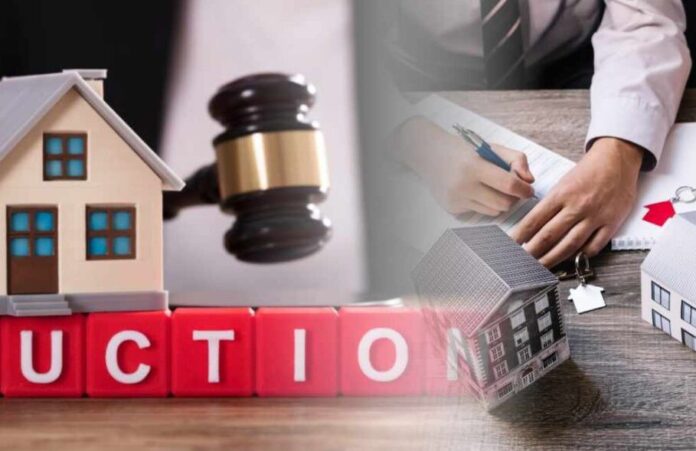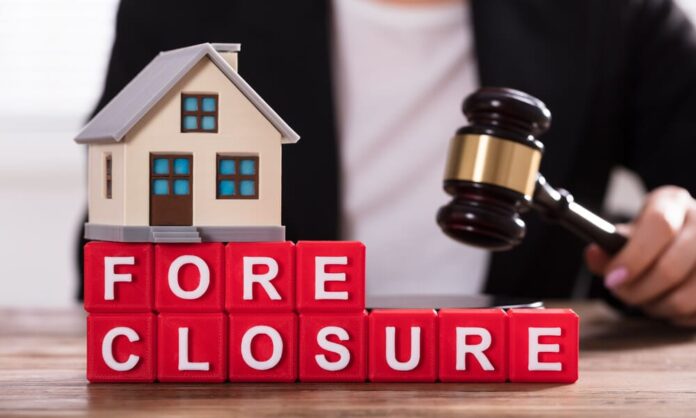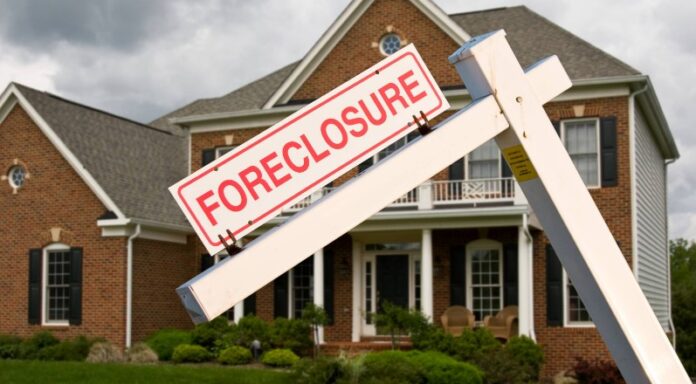At the start of this year, US foreclosures reached a pandemic high. Though much of the increase was from federal eviction moratoriums expiring, it still puts a spotlight on the complex and often confusing legal process we call foreclosure.
In this article, we’ll explain what foreclosure is, why it happens, and its five stages. That way, if you ever find your house being foreclosed on, you know what to expect.
Let’s get started!
What is a foreclosure?
Foreclosure is the legal process by which a lender can recover the amount owed on a mortgage if the borrower stops making payments. The lender takes possession of the property and usually tries to sell it at a public auction.
Why can lenders do this? Well, in the mortgage agreement, borrowers agree to have the property serve as collateral on the loan. So lenders are entitled to repossess it if and when the borrower defaults on their payments.
But the process is long and slow, especially in states that require lenders to go through a judicial foreclosure, which means they must go to court to get a judgment before they can start foreclosing.
Common causes of foreclosure

As a homeowner, there are many reasons you could end up with a foreclosure. Here are some of the most common:
- You lose your job. A sudden job loss could wipe out your income, making it impossible to make your mortgage payment.
- You have a medical emergency. You never know when a tragic accident will leave you seriously disabled and unable to earn an income.
- You get divorced or your spouse dies. On top of all the emotional stress, losing a spouse could mean losing their income to help make the mortgage payment.
- You’re impacted by a natural disaster. Natural disasters like hurricanes or wildfires could force you to evacuate your home and make it hard to keep up with mortgage payments.
- You move without selling your home. If you move without selling your house first, you might get stuck with two mortgages and not be able to afford both.
- You get behind on other debt. Getting behind on other debt like credit cards or autoloans may force you to choose between bankruptcy and foreclosure.
- You have an unexpected big expense. Unexpected bills like car repairs could strain your ability to keep up with mortgage payments.
- Your adjustable-rate mortgage (ARM) increases. ARMs might have a low interest rate initially, but as it increases over time, you might find yourself unable to pay off your mortgage.
Now that you know what could lead to a foreclosure, here are the 5 steps that every foreclosure goes through:
1. Payment default

As soon as you miss a payment, the lender will reach out to remind you it’s due. Mortgage payments are usually due on the first day of the month, but you may get a grace period of up to 15 days depending on the bank.
After that, you’ll start incurring late fees. Once you’ve missed your payment for the third time, lenders will send you a demand letter, aka a “notice to accelerate,” stating how much you must pay to bring the mortgage current and demanding that you do so within the next 30 days.
2. Notice of default
If you miss your fourth payment, the lender will send you a notice of default (NOD), which states their intent to start the foreclosure process.
At this point, you usually get 30 more days to remedy the debt. Due to federal law, lenders usually must wait until you are at least 120 days past due on your payments to start the foreclosure process.
3. Notice of sale
Next, the lender will send you a notice of sale to officially start the foreclosure process.
Depending on the state, the lender may have to get approval from a court first. This is called a judicial foreclosure. But if your state allows nonjudicial foreclosures, there may already be a power of sale clause in the mortgage agreement that allows the lender to start the process without court approval.
In either case, the lender will schedule the sale of the property at a public auction with the county. Up until the auction, you can still pay off the remaining debt plus fees to stop the foreclosure process.
4. Public auction

At the auction, the opening bid will be set to the value of the outstanding mortgage plus any liens, unpaid taxes, marketing costs, and fees.
The winning bidder will get the deed to the property and can immediately take possession of it. Any money above the opening bid amount will go back to you as the borrower.
If the house doesn’t sell, the lender becomes the owner of the property, which is then considered real estate owned (REO) or bank-owned.
5. Eviction
As soon as someone buys the property or it’s deemed REO, you will be required to move out. But you may get a little time to leave and remove your belongings depending on the new owner and local laws.
To help you with moving costs, you may ask the new owner about a “cash for keys” offer. This is usually a few hundred or thousand dollars given to incentivize you to move out promptly and leave the house in clean condition.
If you don’t vacate the property, law enforcement will eventually come to remove you and impound any belongings remaining in the house.
Final word

Foreclosure can be a scary thought. But if you are struggling to make your payments, the best thing you can do is to inform your lender early on.
According to foreclosure attorney Devin Sawdayi, “most banks want to avoid foreclosure as much as you do because it costs them money and time. So if you can prove that you’re in financial hardship, they may allow you to lower your monthly payment. Work with them to find the best solution.” Check out this website to learn more.
You can also take advantage of foreclosure-avoidance programs like Making Home Affordable. Or you might consider bankruptcy first, which can stall a foreclosure. But this and other options can get tricky, so it’s best to consult an experienced foreclosure lawyer to help you find the best resolution for your situation.









